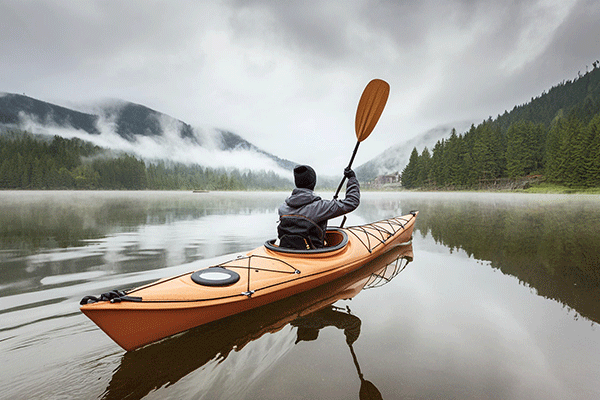
Kayak fishing has become increasingly popular, offering anglers access to peaceful, shallow waters inaccessible to larger boats. Combining this serene activity with the technology of a fish finder enhances your fishing effectiveness, providing valuable insights into what lies beneath the water. This guide will explain how to optimize the use of a Kayak Fish Finder.
A fish finder uses sonar technology to detect underwater objects by sending out sound waves and interpreting their echoes. This device lets you identify fish, structures, and the contours of the lake or river bed. It typically consists of a display unit, a transducer for sending and receiving sonar signals, and a power source. When selecting a fish finder for kayak use, it's essential to choose a model that is compact, easy to read in bright sunlight, and waterproof.
Choosing the Right Fish Finder for Kayak Fishing
Due to limited space, a kayak fish finder should be compact and lightweight. It's crucial to select a kayak fish finder model that can be mounted easily and does not require significant modifications to your kayak. Ensure the device is durable and capable of withstanding exposure to water and the elements.
Installing a Fish Finder on a Kayak
Mount the display in a location that is easily visible but does not obstruct your fishing activities. Rail mounts or gear tracks can be very useful if your kayak has them, as they allow for flexible placement and easy removal of the fish finder. The transducer should be mounted securely to receive accurate data, with common installation points being inside the hull, on a transducer arm, or through a scupper hole designed for this purpose in fishing kayaks. The fish finder typically runs on a 12V battery, which should be housed in a waterproof bag or box to protect it from water.
How to Operate a Fish Finder on a Kayak
Before you start your trip, turn on the fish finder and adjust its settings based on the water conditions and expected depth. You might need to adjust the frequency, brightness, and sonar sensitivity. Learning to interpret the display correctly is crucial; look for icons or arches that represent fish, continuous lines indicating the bottom, and any signs of underwater structure. Adjust the fish finder's settings as needed based on its feedback.
Tips for Successful Kayak Fishing with a Fish Finder
Position your kayak parallel to the shore or bank to cover a broad area with your fish finder. Adjust your kayak's position as needed based on wind and current to maintain the desired course. Keep your speed steady and slow to ensure accurate sonar readings, as high speeds can cause turbulence and degrade the quality of the data. If your fish finder has GPS functionality, use it to mark waypoints for productive fishing spots to easily find them again on future trips.
Advanced Features and Techniques
A HD Color Display offers sharper and more detailed images of fish and underwater terrain. This clarity is enhanced by selectable SONAR frequencies, which vividly renders these details, making it easier to distinguish between different types of underwater features. Choose between side imaging for a broad scan of the areas beside your kayak, or down imaging for a focused view directly below, depending on your fishing needs.
Maintaining Your Fish Finder
Regularly clean the fish finder's display and transducer, especially after using it in saltwater. Store the device in a dry, safe place when it's not in use. If you encounter issues such as interference or a weak signal, check the connections and the battery charge. For specific problems, consult the user manual or contact customer support.
Incorporating a fish finder into your kayak fishing gear can significantly improve your fishing success and enjoyment. With practice, you'll become skilled at reading sonar data and using it to enhance your fishing trips. Are you ready to enhance your kayak fishing experience with a fish finder? Check out our range of kayak-friendly fish finders at Hawkeye Electronics and get out on the water.



